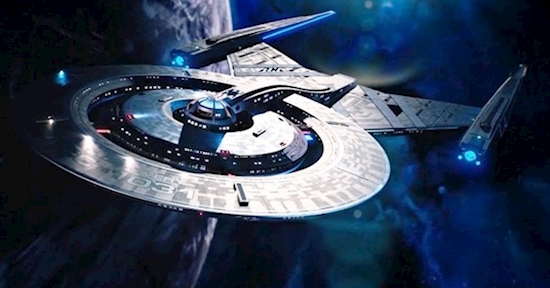Star Trek: Discovery Reveals the Discovery-A
Star Trek: Discovery returned today for the sixth episode of its third season. The new season sees Discovery and its crew thrust into the 32nd century, more than 900 years into their future. Now they've arrived, the ship needs an upgrade. The experimental spore drive remains intact, but Starfleet retrofits most of Discovery's other systems with new technology. And, in keeping with a Star Trek tradition dating back to the Enterprise's destruction in Star Trek III: The Search for Spock, the ship got a new designation to match its updated design. SPOILERS for Star Trek: Discovery season three, episode six, "Scavengers," follow.
As the episode opens, we see drones outside the ship, putting on the finishing touches of paint. The Discovery is now the USS Discovery NCC-1031-A or the Discovery-A. This rechristening is a naming convention used for the Enterprise's iterations, from the first version of Star Trek: The Original Series to the Enterprise-E in the Star Trek: The Next Generation movies. It's a tradition Discovery revisited last week when it revealed the USS Voyager-J.
Fans may note that lettered designations are typically applied to brand new ships that bear the same name and registry numbers as their predecessors. They're usually not given to vessels undergoing a refit. But it's been 900 years. Starfleet probably had to make enough upgrades to Discovery that the finished product was considered a new starship for all practical purposes.
What do those updates entail? The most visible upgrade is programmable matter. That's the shifting control substance that viewers first saw on Book's ship in the season premiere. It is now present on the bridge crew's control panels and used to give Discovery the detached nacelles that are all the rage in 32nd-century ship design.
Other upgrades include an internal systems update and new holographic PADDs for the crew. The crew also gets new Starfleet badges featuring the 32nd-century insignia design. The badges also function as communicators, personal transporters, and tricorders.
Stamet's spore drive interface also got an upgrade thanks to Adira. Instead of jacking himself into the device to navigate, Stamets can now control the drive using two control pylons. The controls have a reactive gel topping in which Stamets can submerge his fingers. Adira also did the Stamets the solid of removing the interface jack from his hard, seeing as there's no need to use it any longer.
What do you think of the Discovery-A? Let us know in the comments.
Source: comicbook.com

